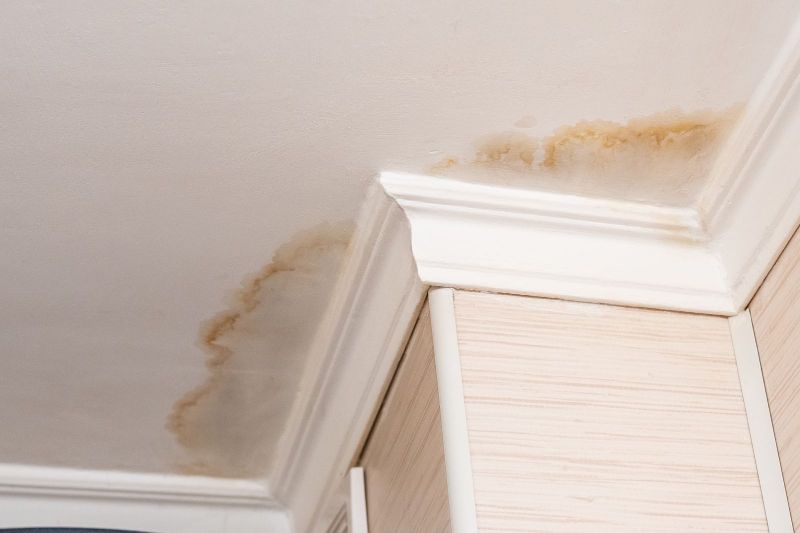Mold can be a persistent problem in many homes, causing not only unsightly stains but also potential health hazards. From respiratory issues to allergies and even structural damage, mold can wreak havoc on our homes and our well-being. However, by taking proactive measures, we can prevent mold growth and maintain a healthy living environment. In this blog post, we will explore eight essential tips to help you keep mold at bay, ensuring a safe and mold-free home for you and your family.
Control Moisture Levels:
Mold thrives in damp and humid conditions, making it crucial to control moisture levels in your home. Regularly inspect areas prone to moisture accumulation, such as bathrooms, kitchens, and basements. Fix any leaks or plumbing issues promptly, as even minor drips can lead to mold growth over time. Additionally, ensure proper ventilation by using exhaust fans in high-moisture areas and opening windows to improve airflow. Monitoring and maintaining an optimal indoor humidity level (between 30% and 50%) will greatly reduce the chances of mold colonization.
Proper Ventilation:
Good ventilation is key to preventing mold growth as it helps to circulate fresh air and remove excess moisture. Ensure that your home is adequately ventilated by utilizing exhaust fans in bathrooms, kitchens, and laundry rooms. Properly vent clothes dryers to the outside and consider using dehumidifiers in areas with high humidity levels. Opening windows regularly, especially after cooking or showering, allows fresh air to enter and damp air to escape. By keeping the air moving, you can significantly decrease the likelihood of mold formation.
Regular Cleaning and Maintenance:
Regular cleaning and maintenance play a vital role in mold prevention. Keep all areas of your home clean, especially those prone to moisture, such as bathrooms and kitchens. Regularly inspect and clean gutters and downspouts to ensure proper water drainage away from your home's foundation. Clean and dry any spills or water leaks promptly, and regularly check for signs of condensation on windows or walls. By maintaining a clean and dry environment, you can eliminate the ideal conditions for mold growth.
Use Mold-Resistant Materials:
Choosing mold-resistant materials for your home can go a long way in preventing mold damage. Consider using mold-resistant drywall, paints, and insulation in areas prone to moisture, such as bathrooms and basements. These materials are designed to inhibit mold growth and are excellent investments for maintaining a healthy home environment. Additionally, opt for moisture-resistant flooring options like tile or laminate instead of carpets, which can trap moisture and provide a breeding ground for mold.
Monitor Indoor Humidity:
Monitoring indoor humidity levels is crucial in preventing mold growth. Invest in a hygrometer, a device that measures relative humidity, to keep track of moisture levels in your home. Ideally, aim to maintain humidity between 30% and 50% to discourage mold colonization. If humidity levels rise above this range, consider using dehumidifiers to reduce moisture. Dehumidifiers are particularly useful in basements and other areas prone to excessive moisture. Regularly empty and clean dehumidifier tanks to prevent mold growth within the device itself.
Promptly Address Water Intrusion:
In the event of water intrusion, whether from a leaky roof or a plumbing issue, swift action is essential. Address any water-related problems promptly to prevent moisture buildup and mold growth. Dry and clean affected areas within 24 to 48 hours to inhibit mold spore germination. Consider consulting a professional for extensive water damage restoration to ensure thorough drying and to mitigate potential mold issues. Remember, the longer water and moisture persist, the higher the likelihood of mold colonization.
Improve Air Circulation:
Proper air circulation is crucial for mold prevention. Arrange furniture and belongings in a way that allows air to flow freely and reach all areas of your home. Avoid blocking vents and ensure that air registers are not covered. Regularly dust and vacuum to eliminate dust particles that can contribute to poor air quality and mold growth. If necessary, use fans to improve air movement, especially in areas with limited ventilation. By improving air circulation, you create an environment that is less favorable for mold development.
Educate Yourself :
Lastly, educating yourself about mold prevention and early detection is key to maintaining a healthy home. Stay informed about the signs of mold growth, such as musty odors, visible stains, or unexplained health symptoms. Familiarize yourself with local regulations and best practices for mold prevention. If you suspect mold in your home, consider consulting a professional mold inspector for a thorough assessment. By staying proactive and informed, you can effectively prevent mold damage and ensure the well-being of your household.
Preventing mold damage requires diligence and a proactive approach. By controlling moisture levels, improving ventilation, practicing regular cleaning and maintenance, using mold-resistant materials, and monitoring indoor humidity, you can create a healthy and mold-free home environment. Remember, early prevention is the key to avoiding costly repairs and safeguarding the health of your loved ones

